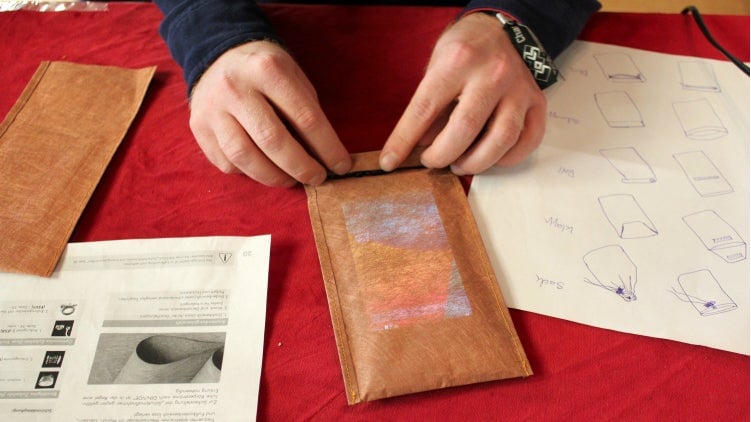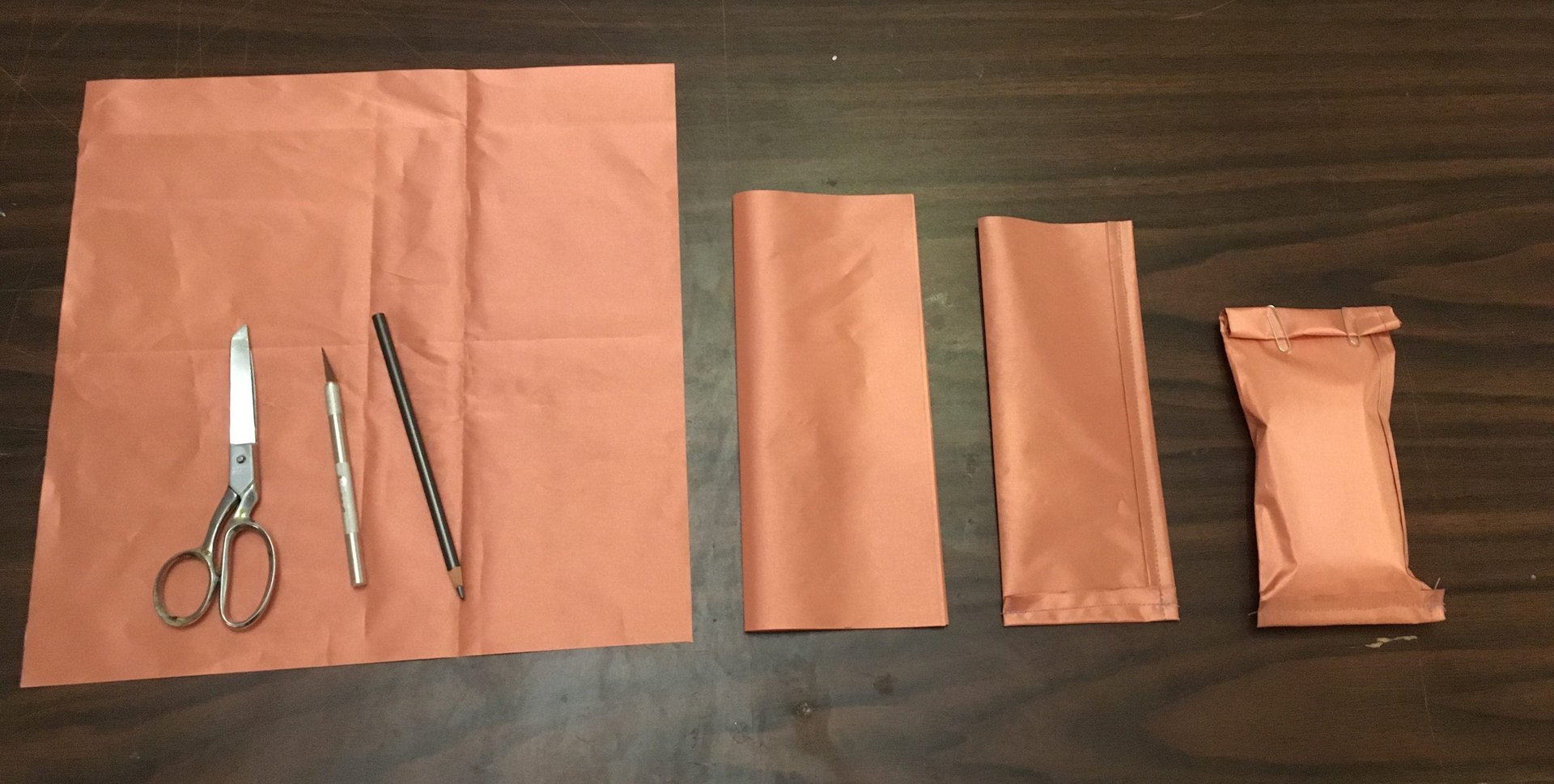How to make a signal-blocking cell phone pouch
For some at the Republican National Convention in Cleveland, the chosen accessory for protection is an AR-15-style rifle, casually slung over the shoulder. For the Los Angeles-based artist and activist Tim Schwartz, it’s a discreet pouch made of matte silver ripstop fabric that houses his cell phone.


For some at the Republican National Convention in Cleveland, the chosen accessory for protection is an AR-15-style rifle, casually slung over the shoulder. For the Los Angeles-based artist and activist Tim Schwartz, it’s a discreet pouch made of matte silver ripstop fabric that houses his cell phone.
That silver fabric blocks the signal that cell phones constantly transmit—a function Schwartz says is imperative at an unpredictable, politically charged event such as the Republican National Convention.
“I think it’s reasonable everyone should be protecting themselves when they’re walking into a situation when they don’t what’s going to happen,” Schwartz says. In particular, he explains, ”You can be tracked easily by having your phone on and out.” And if a disruption happens, he says, the information could even be used retroactively: “The government could request records, show you were in that area when something went bad.”
The Electronic Frontier Foundation, a non-profit devoted to protecting civil liberties in the digital world, advises protesters that while their cell phones are powerful tools for documenting with photos and videos, they also contain a trove of personal data including contacts, location, message history, emails, and private login information. ”All of our lives are on our devices,” says Schwartz.
These radio frequency-blocking bags, known as Faraday cages, are readily available to the powerful population Schwartz refers to as the “techno-elite.” Quartz has reported on a $720 cash-transporting, RF-blocking bag, and president Barack Obama travels with a tent that serves the purpose.
For RNC protesters looking for a cheaper DIY option, Schwartz is holding “office hours” for protesters at Spaces gallery in Cleveland, to come sew their own signal-blocking cell phone pouches, as per the instructions shared by the Berlin-based artist, Aram Bartholl. His sessions run from 1pm to 4pm today (July 19) and tomorrow.
It’s a safeguard that non-protesters might consider too, Schwartz says. “It’s like using long passwords,” he says. “It’s one of those things where we should be doing it, but we never get around to it.”
Schwartz is providing a copper taffeta fabric, a sewing machine, and advice to protesters. He says his eighth-grade level home economics training in sewing is adequate for the task, and notes that the most important step is making sure all the pouch’s edges are folded and secure.

Here are the instructions, from Aram Bartholl’s site, Kill Your Phone. Materials are available from lessemf.com:
Cut 12 cm stripes from your roll blocking fleece.
Make pieces of 50 x 12 cm, each for one pouch. (i.e. from a 1 m roll stripe you’ll get 2 pieces.)
Fold your 50 x 12 cm piece in length to 25 x 12 cm
Fold again the long sides, each 1 cm and pin them with needles.
Sew two straight seams on the left and right side.
Fold the opening at least 2 times! Find a paper clip or clamp to close the pouch.
Done!
Previously, Schwartz developed a tool for victims of the Haitian earthquake in 2010 to find their missing family members. After that, he said, he ”fell down the rabbit hole of digital privacy,” and worked with the Fordham Law School’s Center on Law and Information Policy (CLIP) to research the privacy available to individuals on the web, and balance that with safety.
In the years since, Schwartz has run digital privacy workshops such as “How to be a whistle-blower” at schools including Cal Arts and UCLA, partially in collaboration with the web-based privacy movement known as Cryptoparty. For the rest of the month, he’ll continue that work as an artist-in-residence at Spaces, where he’ll host events such as a “dark web treasure hunt” to help people learn about digital privacy.